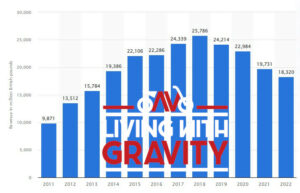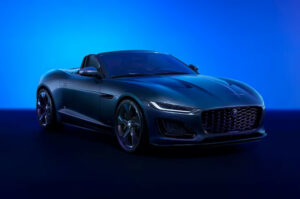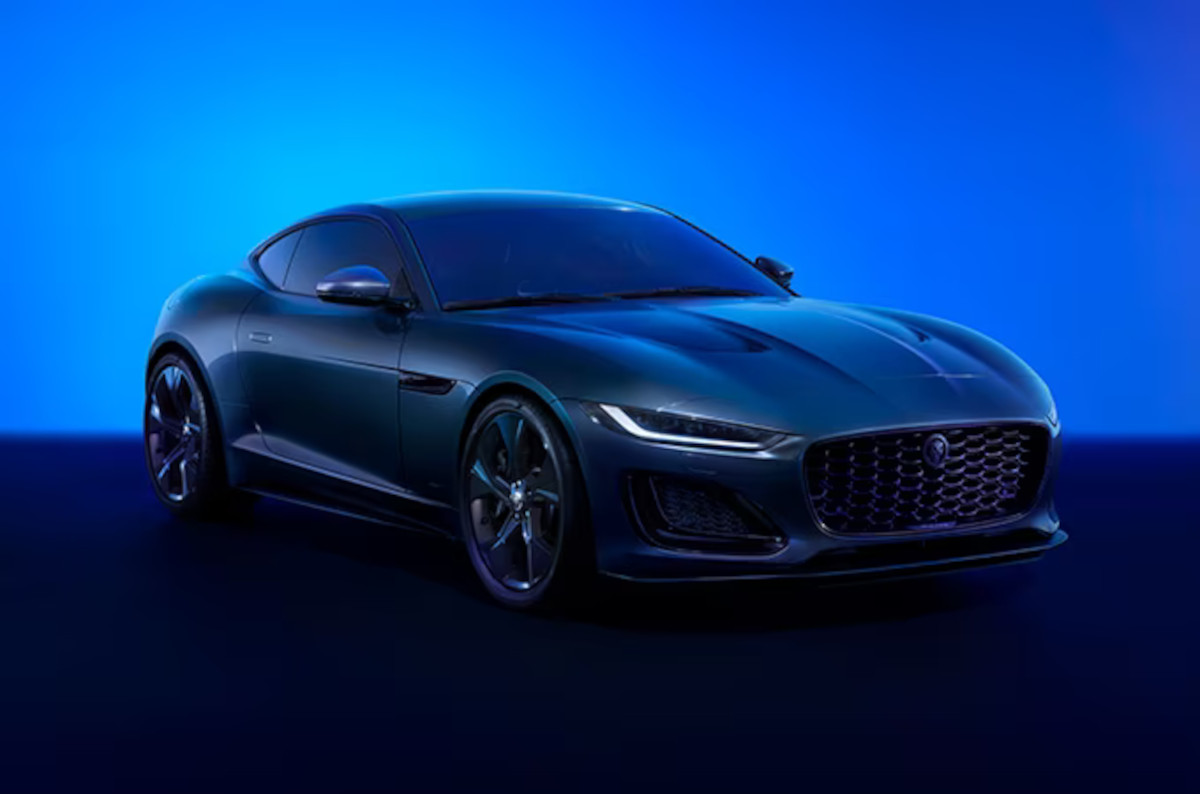ads
While it is true, Jaguar has historically been associated with a certain level of prestige and allure, and it is essential to note market preferences and dynamics can change over time. Several factors could contribute to the decline in Jaguar’s sales and its perceived lack of popularity compared to brands like Mercedes-Benz and BMW. Here are some possible reasons:
Read More : Take a look a Voge’s Scrambler
Reasons
- Shifting consumer preferences: The automotive market constantly evolves, and consumer preferences change accordingly. There has been a growing demand for SUVs and crossovers in recent years, while traditional luxury sedans have faced declining sales. Jaguar’s lineup has been predominantly focused on sedans and sports cars, which may not align with current market trends.
- Competition: The luxury car market is highly competitive, with numerous established and emerging brands vying for customers’ attention. Mercedes-Benz and BMW have strong brand recognition, and extensive model ranges cater to many customers. On the other hand, Jaguar has a more limited lineup, and the competition may have overshadowed its brand perception.
- Reliability concerns: In the past, Jaguar had a reputation for reliability issues, which may have impacted consumer confidence in the brand. While Jaguar has made efforts to improve the reliability of its vehicles in recent years, perceptions can be slow to change.
- Limited marketing and brand visibility: Effective marketing and brand visibility capture consumers’ attention and generate sales. If Jaguar’s marketing efforts have been relatively limited compared to its competitors, it could contribute to lower consideration among potential buyers.

Electric
- Electric vehicle transition: The automotive industry is shifting significantly towards electric vehicles (EVs). Brands have invested heavily in EV technology, and a strong EV lineup may garner more attention and sales. While Jaguar has introduced electric vehicles like the Jaguar I-PACE, its overall EV presence may not be as prominent as some of its competitors.
- The sedans from Jaguar, namely the XE and XF, were discontinued due to poor sales performance. Despite being launched in 2015, these models still need significant updates or refreshes, making them outdated compared to their competitors. As a result, they could not attract a substantial number of buyers.
The XE sedan faced tough competition from the Mercedes-Benz S-Class in the European market, and its sales consistently outperformed the S-Class since 2018. This indicates European consumers preferred the S-Class over the XE, possibly due to factors such as brand reputation, perceived value, or features offered by the S-Class.
The Jaguar XF sedan also suffered from weak sales, surpassing the number of units sold by the Jeep Wrangler in the UK in 2021. This further demonstrates the lack of demand for the XF sedan compared to other vehicles in the market.
Competitive
To remain relevant and competitive, car manufacturers must regularly update their product lines to incorporate new technologies, designs, and features that meet evolving customer preferences. If a model fails to attract sufficient sales and becomes outdated, discontinuing it becomes a viable option for the manufacturer to focus on more successful and popular models or to invest in developing new vehicles that align with market demands.
Market conditions, changing consumer preferences, and other external factors can significantly impact the sales performance of a product line. In this case, Jaguar’s sedans could not keep up with the competition and meet customer expectations, leading to their discontinuation.
Jaguar’s sales may face challenges, but it doesn’t necessarily mean no one buys them. Loyal customers and enthusiasts still appreciate the brand’s unique qualities. Additionally, sales figures can vary by region, and there may be markets where Jaguar maintains a more robust presence.Reimagine
- Reimagine: Thierry Bolloré, the former CEO of Jaguar Land Rover (JLR), did indeed introduce the “Reimagine” strategy in 2021 to transition the company to a fully electric vehicle (EV) lineup by 2025. The strategy represents a significant shift for the company, focusing on sustainability and aligning with the global trend toward electric mobility.
While going fully electric is a bold move, it does present challenges and considerations. One of the concerns is the potential abandonment of internal combustion engine (ICE) customers. Not all customers may be ready or willing to switch to electric vehicles by 2025, and JLR’s strategy may lead to losing customers who prefer petrol or diesel luxury cars.
However, the shift to electric vehicles is a growing trend across the industry, driven by factors such as stricter emissions regulations, advances in EV technology, and increasing customer demand for sustainable transportation options. Automakers, including JLR, respond to these market forces and make strategic decisions accordingly.
Regarding the discontinuation of the current lineup, it is common for automakers to introduce new platforms and models when transitioning to electric vehicles. Electric vehicles have different design requirements, including battery placement, cooling systems, and drivetrain components, often necessitating new vehicle architectures. This shift allows for optimized performance, range, and other critical attributes of EVs. While it may mean that some existing models will be phased out, it also opens up opportunities for new designs and innovations.
R&D
Developing luxury cars requires significant research and development investment (R&D). However, automakers prioritize their R&D budgets based on market trends and anticipated customer demand.
By initially focusing on a narrower product lineup, JLR can concentrate its resources and R&D on developing compelling and competitive electric luxury vehicles. As the market evolves and demand for EVs increases, JLR may expand its product offerings to cater to a broader range of customer preferences.
Ultimately, the “Reimagine” strategy represents a strategic response to the evolving automotive landscape, including the shift toward electric mobility. While it may present some challenges, it also offers opportunities for JLR to position itself as a leader in the luxury electric vehicle segment and align with the changing preferences of consumers and global sustainability goals.XJ
8. Jaguar’s decision to cancel the XJ might be attributed to a shift in its vision for the future. Luxury brands often reevaluate their product lineups to adapt to changing customer preferences and emerging technologies. In this case, Jaguar’s vision for the future may have changed, and they opted to focus their efforts on other models that align better with their updated strategy.
Regarding the lack of sharing between Land Rover/Range Rover and Jaguar, it’s worth noting that these two brands have historically operated as separate entities within the larger Jaguar Land Rover (JLR) group. While some shared components and technologies exist between specific models, each brand has maintained its distinct identity and product lineup.
VAG group (Audi, Porsche, Lamborghini) and BMW-Rolls Royce involve brands closely integrated under a single parent company. In the case of JLR, while there is a level of collaboration and sharing of resources between Land Rover and Jaguar, they still operate as distinct brands with unique market positions and customer bases.
2018
Jaguar has made efforts to revitalize its brand and product lineup in recent years. For example, they introduced the all-electric Jaguar I-PACE in 2018, showcasing their commitment to sustainable mobility. Additionally, Jaguar unveiled the Jaguar F-PACE and E-PACE SUVs, aimed at expanding their market reach to cater to the growing demand for SUVs.
However, perception is subjective, and if enthusiasts feel Jaguar has lost some of its appeals, it’s essential to recognize that it’s a matter of personal opinion. The automotive industry is highly competitive, and brands must adapt to changing consumer preferences and market trends. What may have been considered “drool-worthy” in the 2000s might not align with the current design and technology expectations.
Jaguar may be actively working to address the issues, such as introducing new models, updating its product lineup, or improving the performance and excitement of its engines. Keeping an eye on Jaguar’s latest news and developments can provide more accurate and up-to-date information on their efforts to regain their aspirational value.
Ultimately, automotive brands evolve, and what was once considered iconic or desirable may change. It’s natural for enthusiasts to have nostalgic sentiments, but it’s also essential to acknowledge that brands must adapt to remain relevant in a dynamic industry.
ads
Source: ET Auto, Statista and Jaguar
ads





































